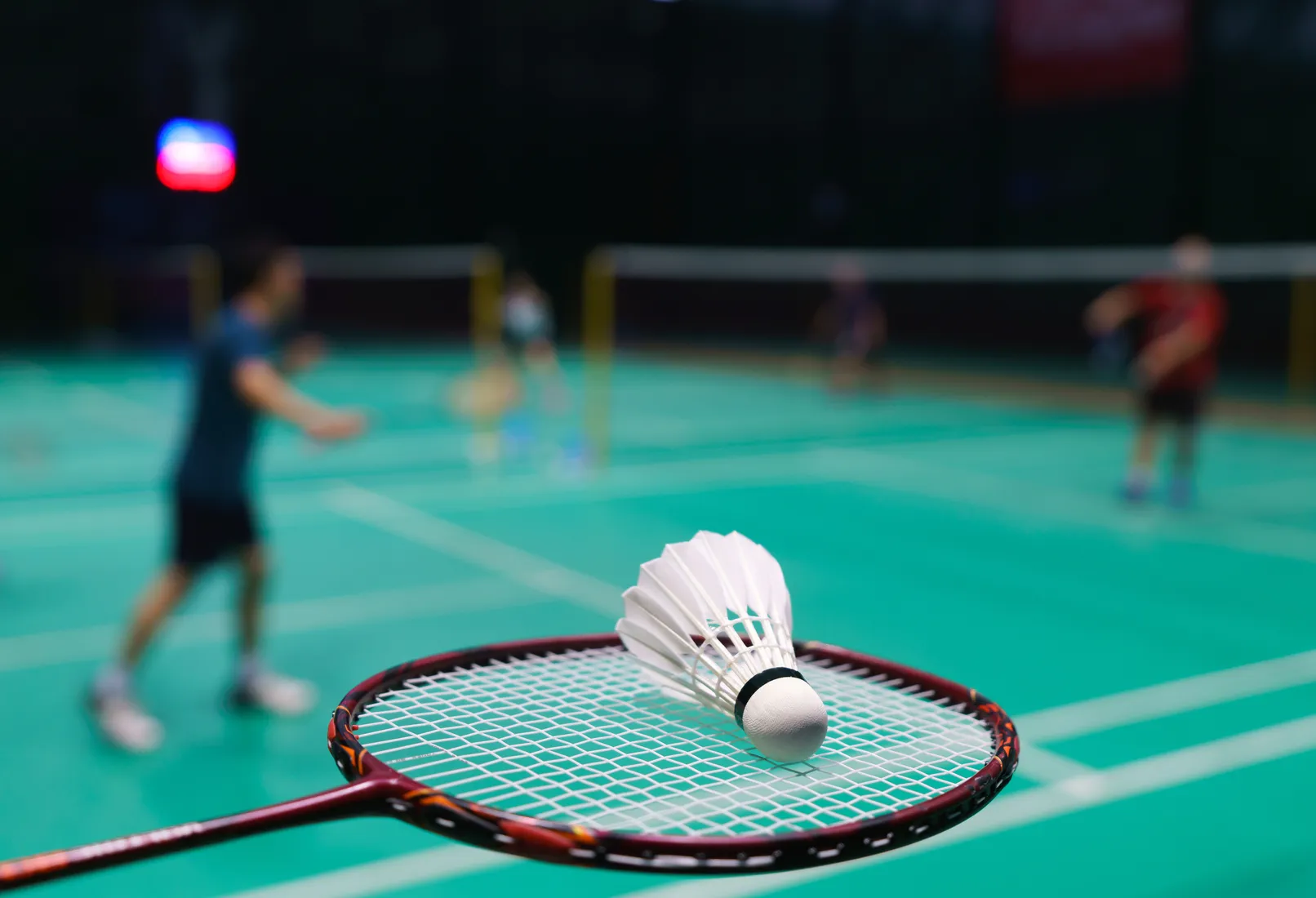Introduction
Badminton is played by many individuals worldwide. Racquets are used to hit a shuttlecock in badminton. Regular competitions let players show off their talents. Games have an ancient history. They’ve evolved into fast-paced, entertaining events that players like. In competitive badminton, you need skill, speed, and strategy. Players use their racquets to strike the shuttlecock in tight matches.
How and where badminton came from
Racquet and shuttlecock badminton originated in China, Greece, and India. It is becoming a prominent racing and competitive sport globally. Early badminton players hit a feathery or light shuttlecock with their hands or wooden racquets.
The game now includes backhand and forehand events. Competitions grew more interesting when racquet sports established uniform rules and equipment. Now, players may use different racquets.
What You Need: The rules and the gear
Both badminton players compete by hitting shuttlecocks over the net to the center. Players need forehand and backhand. Your forehand should hit the shuttlecock over the net to the center without contacting your side. You score when your opponent doesn’t return the shuttlecock. Their racquets may not anticipate and return your well-placed shots or manage your powerful forehand and backhand.
Badminton shoes are needed. They steady you on the court to avoid stumbling. The sneakers are lightweight and grip nicely for effortless movement. They improve racquet shots. Male shuttlecock racquets must be robust.
The Competition and the Plans
It is possible to play badminton with a racket and a shuttlecock. It has games for people in the same area and foreign events like the Olympics. Racquets are used to hit the shuttlecock back and forth over a net in this game. The goal is to get points by smashing things correctly. In singles and team matches, players use different tactics based on their opponents’ skills and flaws. Forehand hits are solid, and they use their racquets to serve the shuttlecock.
Provides fundamental rules and equipment.
History of Origins and Modern Progress
Badminton is played with a stick and shuttlecock by millions worldwide. Its roots are in China, Greece, and India—old cultures. To win, players need backhand strokes and other skills. Developed in 1800s British India, it differs from today’s game. Shuttlecocks are hit with sticks in the forehand and backhand. Popularity spawned the International Badminton Federation, now the Badminton World Federation. The shuttlecock is struck using racquets.
The rules and the gear
Shuttlecocks and sticks are needed for badminton. To serve, you stick-hit the shuttlecock. Carbon fiber or aluminum rackets must be light. Sticks increase badminton serving and shuttlecock striking. String tightness improves shuttlecock performance.
Badminton requires striking the shuttlecock over the net into the other player’s court. Players use sticks to strike shuttlecocks for birds. Soft cork shuttlecocks glide. Rules control serving, receiving, and scoring. Players must hit the shuttlecock below their waist from the service box. Nets divide floors. Various rally strategies may beat opponents and hit the shuttlecock over the net.
A talk about doubles matches and how many badminton players are involved.
A shuttlecock and net are used for badminton matches, which can be played singles or doubles. First, look at singles matches and see how many people are involved. Each player in singles badminton hits the net with a shuttlecock.
In badminton singles, there are two players, one on each side of the court.
Use shuttlecocks and netting. Four pairings. Singles use a shuttlecock and one player. Individual court coverage demands different skills than pairs. Players must hit the shuttlecock effectively and move quickly to stay in control.
You must be quick, agile, and relentless while playing badminton singles. React quickly and anticipate your opponent. This strategy is intellectually and physically demanding. Top singles players. Outscore your opponent. Hot games amuse. Doubles require cooperation. Shuttlecock is delicate. Regular format changes make the game more fun.
A look at pairs matches and how many people are in them.
Both the serve and receiving teams may gain points in badminton rallies.
A badminton doubles match is played between two teams of two players each. You hit a shuttlecock back and forth over the net several times to play. The game is scored by rallies, meaning both the serve and receiving teams can win points. You hit the shuttlecock back and forth over the net to do this in badminton. This makes the game more exciting because each shuttlecock point goes toward a winner.
Most of the time, a match comprises three games, each going to 21 points.
Badminton doubles matches are usually best-of-three using a shuttlecock. The shuttlecock game continues until one team achieves 21 points. Remember that badminton teams must win by two points to utilize shuttlecocks. When playing shuttlecock, or “deuce,” the score is 20. You must lead by two points to win.
A two-point lead is needed to win the game if the score is 20–20.
When the score in a doubles match gets 20–20, the players hit the shuttlecock very hard as they try to win those last few critical points. When this happens, both sides must get a two-point lead with the shuttlecock to win that game. This rule ensures that no shuttlecock game ends with a score of only one point. It also makes pairs play more exciting and competitive.
How are the singles and doubles games similar and different?
For doubles matches, stamina and speed
In badminton, players can use a shuttlecock to play either singles or doubles matches. In a singles match, two players use a shuttlecock to hit the ball against each other on different sides of the court. Players must be speedy and have a lot of energy to cover the whole court and return hits from the other player with a shuttlecock. The tennis spin, grips, distance, speed, hitting action, and shuttlecock are significant in a singles match.
Coordinating and working as a team for doubles matches
In doubles, on the other hand, there are four players, two on each side of the court, and they use a shuttlecock. With the help of a shuttlecock, partners in doubles have to work together and coordinate their moves to beat their opponents. Communication is essential in badminton because players need to be able to plan their shots and move with the shuttlecock. To stay in charge of the game, you must be able to smash, drive, and respond quickly with the shuttlecock.
Different problems and plans
When playing with a shuttlecock, the techniques and tasks differ for singles and pairs. In a doubles match, players often try to take advantage of their opponent’s weaknesses by moving them around the court with well-placed shuttlecock shots. When playing teams, on the other hand, players have to guess where their opponents will be and how their partners will move. This is important in badminton, where the shuttlecock’s path can change quickly.
A look at mixed doubles matches and how many people are in them.
Badminton with a shuttlecock improves fitness, endurance, hand-eye balance, responses, speed, and shuttlecock abilities. Badminton is a social sport that promotes teamwork, fair play, mental attention, and the shuttlecock.
A team of one guy and one girl plays against another team in mixed doubles.
They need to work together and use a shuttlecock. Talking and learning to win are essential. Four people are on the court, each doing something different. It’s a quick and exciting game. Each match is unique because the players use different styles.
Teamwork and talking to each other are essential in doubles and mixed doubles.
Professional tournaments for badminton
Professional badminton events happen worldwide to show off the best players’ skills. Skilled players come from around the world to compete in events like the Olympics and World Championships. These events allow players to show their speed, strength, and expertise.
How to Work Together
Teamwork is crucial in doubles and mixed doubles. Teams must work together in doubles, but players must utilize their abilities in pairs. Teamwork helps athletes cover more territory.
How to Communicate Well?
Communication is vital in doubles and mixed doubles. Players must collaborate during fast-paced parades to make judgments. Clear communication helps players foresee one other’s actions, enhancing court position.
Trusting Your Partner: Mixed and doubles need trust. Each player must trust their partner to block shots or make intelligent moves. Working without worrying about their partner is possible when friends trust one another.
Partnerships That Work
Many of their partner’s actions come from places like China, Indonesia, and Denmark, and they are known for how well they play with a partner in doubles games. These relationships are built on solid teamwork, good communication, and partner trust.
Talk about different versions, like small badminton for younger players.
People think Lin Dan from China is one of the best badminton players ever.
China’s Lin Dan is a top badminton player. His ability and determination on the court have earned him several trophies and honors. Speed, quickness, and intellect make him an inspiring athlete globally.
Saina Nehwal from India has won many awards in women’s singles badminton.
Nehwal revolutionized women’s singles badminton. A 2012 London Olympics bronze medal is one of her many accomplishments due to hard effort. Many females want to play badminton after Saina’s performance.
Carolina Marin of Spain is famous for her powerful play and Olympic gold medal.
Carolina Marin, who plays for Spain, is known for being bold, which keeps her opponents on their toes. Her strength and speed on the floor are unmatched, which makes her a formidable opponent. She won the gold award at the 2016 Rio Olympics, one of her most significant achievements. Carolina’s success is an example for other players who want to do well by being determined and persistent.
How the number of players affects court position.
Many different types of people of all ages and skill levels can enjoy badminton.
Badminton is a holistic sport that benefits the mind and body. From recreational to competitive, badminton is for everyone. It helps you stay healthy, increase your blood health, and improve your quickness and timing.
Badminton is excellent for you emotionally and physically, whether you play professionally or recreationally.
Badminton needs rapid thought and movement. Each squad has two single players. 4-player pairs form two-person teams. Doubles players serve from various courts. While another defender defends the back, another shoots near the net. Singles court coverage. Where others strike the shuttlecock determines movement. Knowing these areas helps players strategize for strengths and weaknesses. Start playing badminton with a stick, alone or with others!
In conclusion
There is a variable number of badminton players. From fierce singles to fast-paced and mixed doubles, everything is offered. Two solitary players battle on the ground. Four players must communicate in doubles, emphasizing collaboration. Talent and teamwork make mixed doubles teams appealing.
Badminton is great for fitness, development, and competition, regardless of style. Use a racket? Badminton keeps you active alone or together. Play this fast-paced game with someone.





